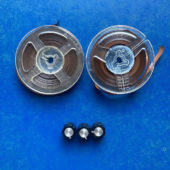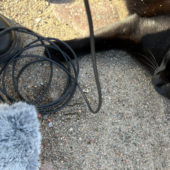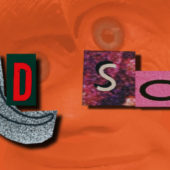Éclat Part 81
Ever have an old Casiotone Keyboard that came preloaded with a bunch of rhythms and melodies? Check out this amazing story from Nippon.com about Okuda Hikoro, who composed the 'Sleng Teng' rhythm that became the basis for hundreds of Reggae tunes.
Download the Sleng Teng rhythm from WeTransfer here.
Tonight's challenge is to make a track of ±2 minutes with the Sleng Teng sample, PLUS any other samples, synths, sounds or effects you like!
"The “Sleng Teng” riddim revolutionized reggae music in the mid-1980s, and has spawned hundreds of versions in the decades since then. Less well known is the story of how the distinctive bassline originated in a preset sample included on a Casio electronic keyboard and the work of a young developer fresh out of college.
“Under Mi Sleng Teng,” by Jamaican singer Wayne Smith, is one of the milestones in the history of Jamaican popular music. Written by Smith and his friend Noel Davey, the pioneering dancehall classic was made using a Casio electronic keyboard. The song immediately became a smash hit when it was released in 1985, and its optimistic digital sound and addictive beat soon took the world by storm.
The rhythm section has always formed the backbone of reggae music. In modern styles, the drums and bass provide the distinctive “riddims” or backing over which a DJ or singer overdubs a vocal. It is common for numerous artists to make their own “versions” (vocal interpretations) of popular riddims, building original songs around the same basic rhythmical pattern. The “Sleng Teng” riddim, named after the song in which it was first used, has now inspired as many as 450 different songs. The riddim played a key role in bringing Jamaican music into the digital era, and is known as one of the “monster riddims” that ushered in the golden age of the dancehall era.
Today, 35 years after the original song was released, the conventional version of reggae history holds that the “father” of the riddim was Wayne Smith and his producer at the Jammy’s label in Jamaica. In fact, the history of the riddim goes back further than Smith and his collaborators. It was originally a preset rhythm pattern programmed into the Casiotone MT-40, released in 1981. It was this preset that Smith and his friends used as the basic building block for their revolutionary song."
- excerpt from Nippon.Com article by Hashino Yukinori - read full article here.





